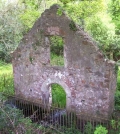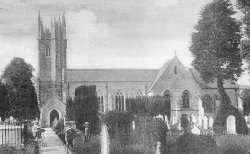Dawlish History
13th - 17th Century History
On April 8th 1253, Henry III drew up a charter confirming the right of the Dean and Chapter to the free warren in the lands of the manor of Dawlish, which once belonged to Philip de Furnell. The charter stated that the rights to the land would be the same as those of the previous Furnells, provided the land was not within the royal forest. Anyone wanting to enter the land required permission from the Dean and Chapter. Entering the land without permission would result in a ten pound fine! This effectively ended any dispute over the rights to the land in Dawlish with Exeter Cathedral having complete ownership.However, Dawlish at this time was a bit smaller, since in 1200 Roger de Limesia, a canon of Exeter, decreased the size by 30 acres by giving land to Thomas Maskerel.
Lidwell Chapel
During the 13th century a chapel was built on haldon at Lidwell and dedicated to St Mary. In 1329 it became the scene of the crimes of Robert de Middlecote, a hermit monk who robbed travellers that rested at the chapel overnight. Middlecote was eventually executed for his crimes.

Dark Ages
Towards the end of the 13th century, Dawlish and Teignmouth had diverged. Dawlish with its flat beaches could not harbour or provide shelter for the ships of the time, Teignmouth, however had the advantage of being located at the base of an estuary with a deep harbour. Despite this both villages were required to build one ship each towards the war against Scotland. Dawlish, therefore, must have been considered as being as wealthy and as skilful in ship making as Teignmouth.
No matter how isolated Dawlish may have been during the 14th century, it did not escape Europe's first recorded major plague epidemic: the Bubonic Plague or 'Black Death' as it was known. Records show that between 1346 & 1349 3 vicars died of the plague in Dawlish and a fourth soon after. Recorded deaths ceased after 1349 until the plague resided. Records of plague fatalities in Devon show that the mortality rate was around 48%. Dawlish most likely experienced the same rate. The plague had a morbid twist to it however as labourers that escaped the disease found themselves in great demand and could now negotiate pay with feudal lords. They also found freedom of travel. The plague contributed to the breakdown of the feudal system of the time.
For the next four hundred years Dawlish would remain insignificant in the historical records. The Dean and Chapter of Exeter continued to own the land, and there are no records of the land exchanging hands. These were, however, the times of the dark ages where poverty, misery and plague were part of everyday life.
St Gregory's Church
In 1438 the church of St Gregory was rebuilt. The date of the original building and its refurbishments are not recorded, although it is assumed one existed before this time probably on the same spot, and probably made of cob. The new building consisted of a nave, chancel and two isles with a western tower.
Flat stones from a quarry at Torre were used for roofing, although this caused expense in the fore coming years as they tended to fall off during gale force winds. The church lasted for some 300 years, but by the 19th century was dilapidated. It was rebuilt in 1825.















